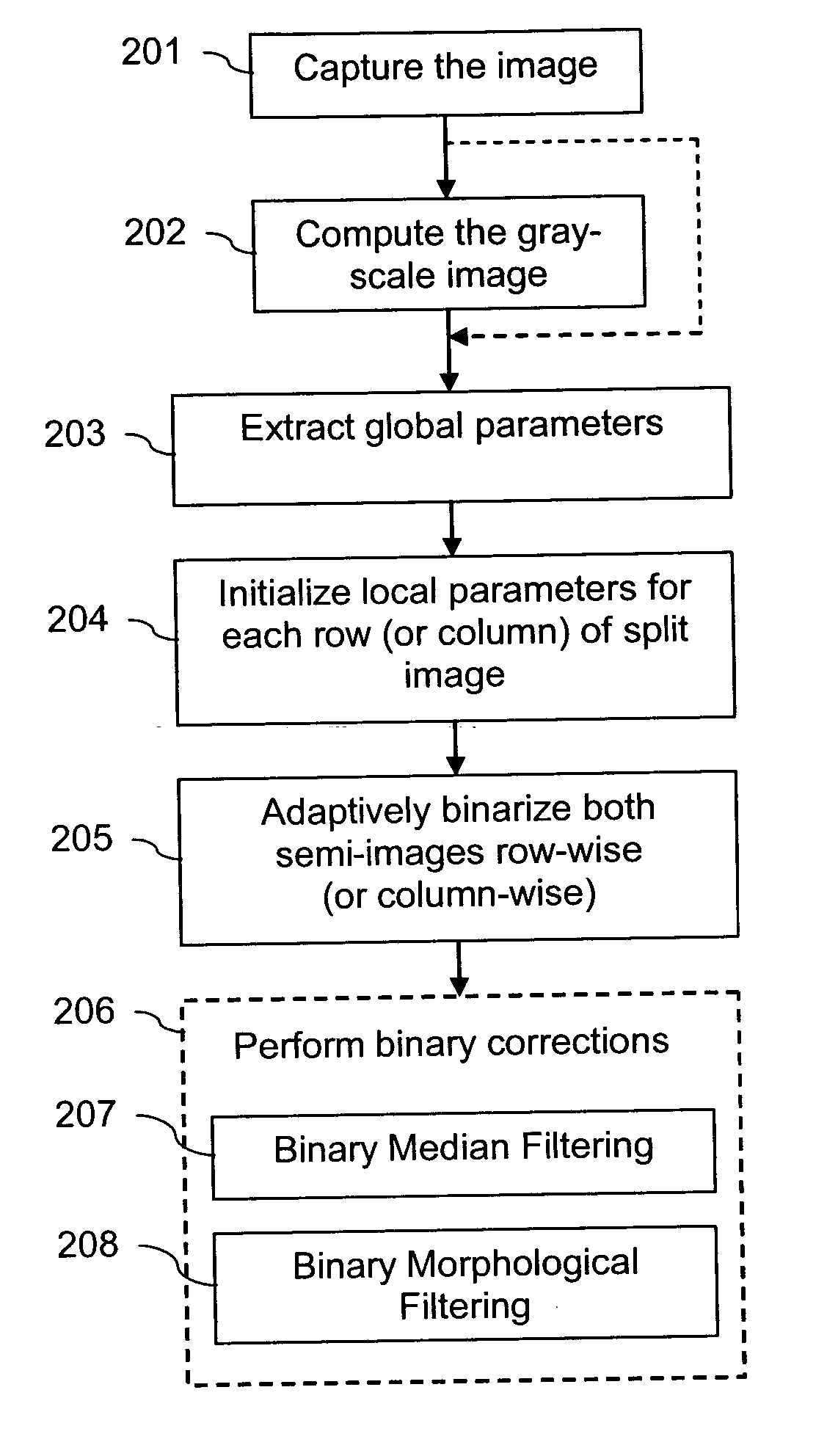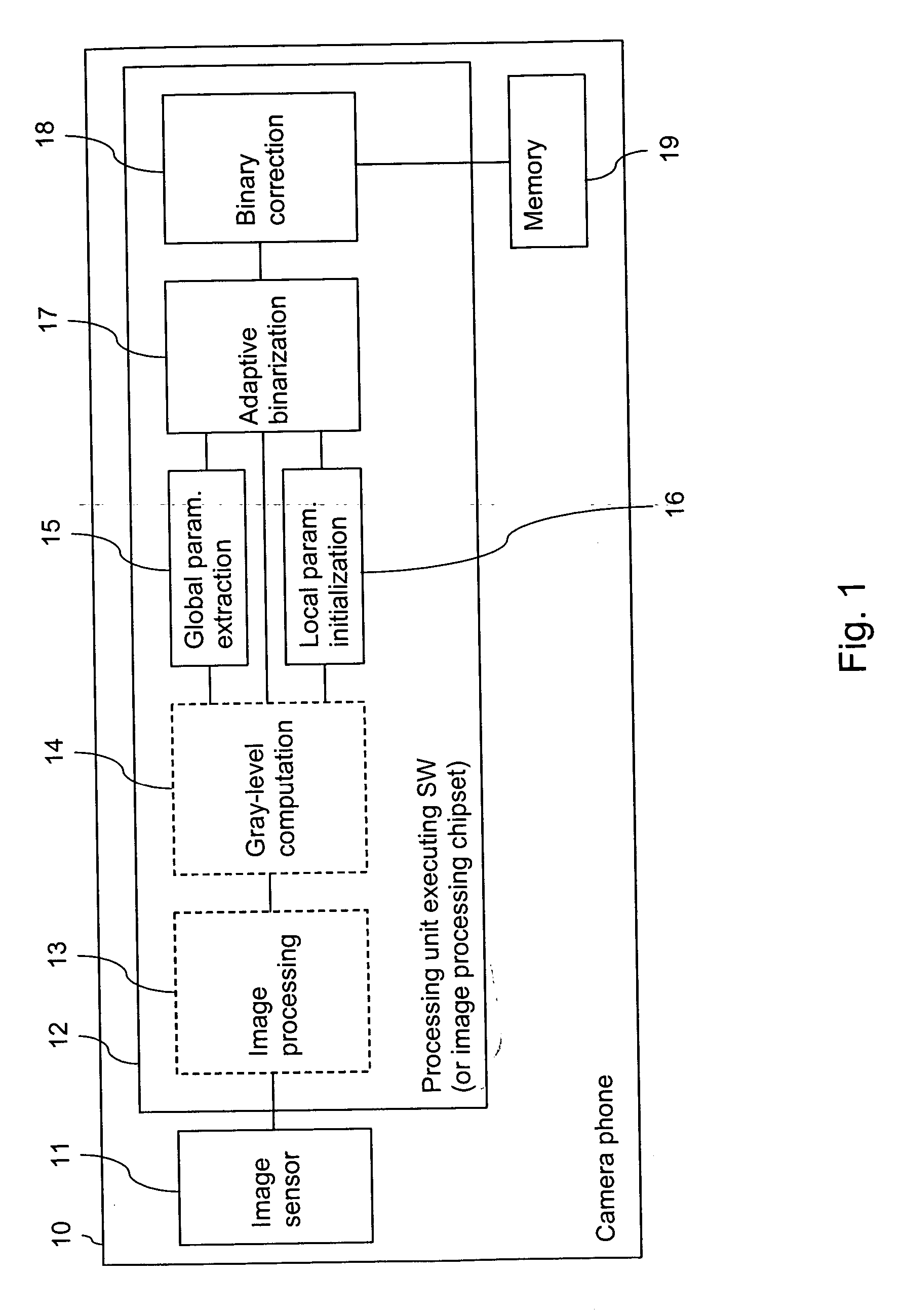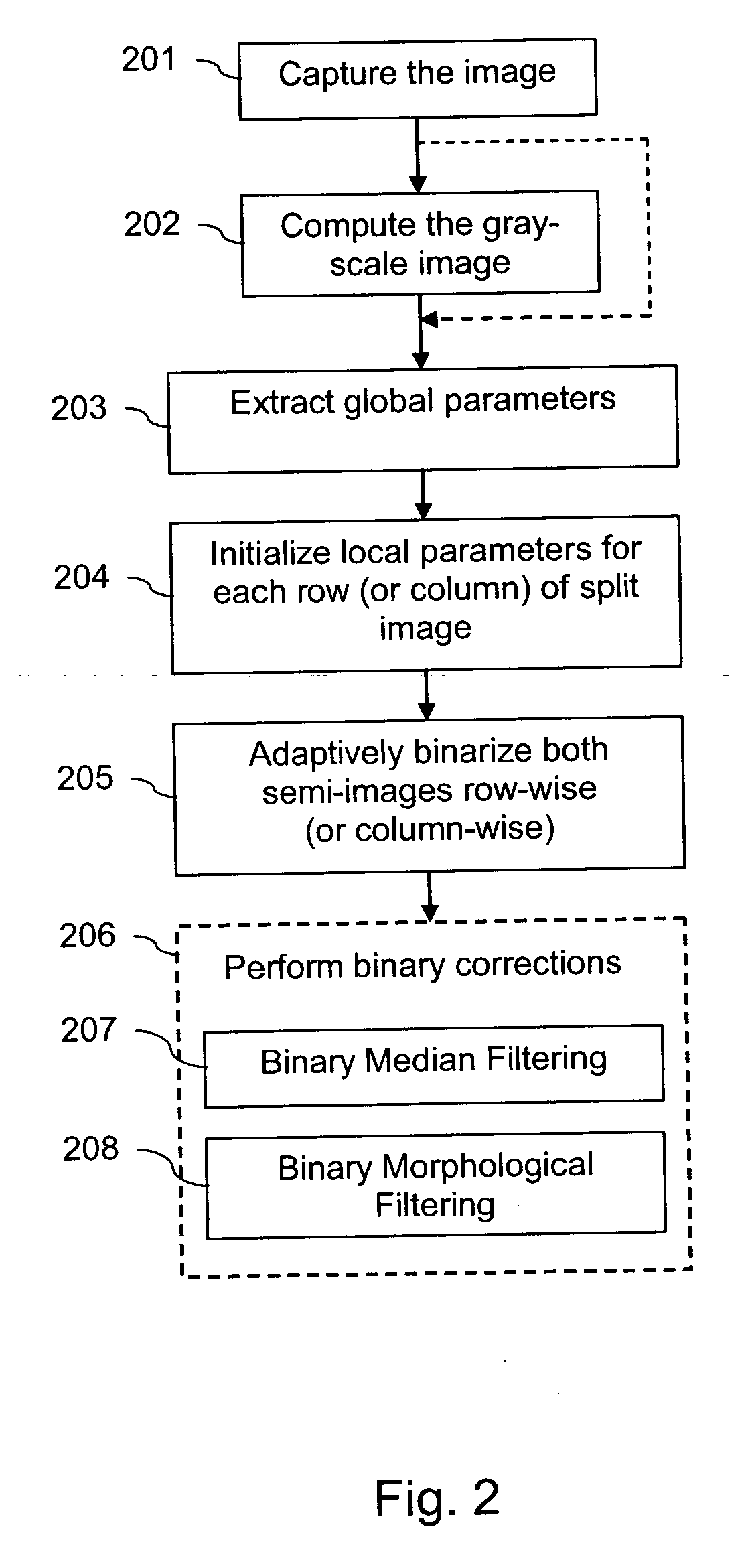Binarization of an image
a binarization and image technology, applied in image enhancement, image analysis, instruments, etc., can solve the problems of complex task of implementing binarization efficiently, complex process, and increased complexity, so as to eliminate vignetting from the input image, simplify the process, and avoid variation in the properties of original images.
- Summary
- Abstract
- Description
- Claims
- Application Information
AI Technical Summary
Benefits of technology
Problems solved by technology
Method used
Image
Examples
Embodiment Construction
[0053]FIG. 1 is a schematic block diagram of an electronic device, which enables an efficient binarization in accordance with an embodiment of the invention.
[0054] By way of example, the electronic device is a camera phone 10, that is, a mobile phone comprising embedded camera functions. It is to be understood, though, that it could be any other kind of electronic device that benefits from an efficient image binarization.
[0055] The camera phone 10 includes an image sensor 11, for instance a CCD (charge coupled device) sensor.
[0056] The camera phone 10 further includes a processing unit 12 that is adapted to execute various software program codes. The software codes include an optional image processing code 13 and binarization-related software program codes. The image processing code 13 can realize for example an imaging chain or a JPG image generator. Together with the image sensor 11, it forms a conventional image capturing portion. The binarization-related software program code...
PUM
 Login to View More
Login to View More Abstract
Description
Claims
Application Information
 Login to View More
Login to View More - R&D
- Intellectual Property
- Life Sciences
- Materials
- Tech Scout
- Unparalleled Data Quality
- Higher Quality Content
- 60% Fewer Hallucinations
Browse by: Latest US Patents, China's latest patents, Technical Efficacy Thesaurus, Application Domain, Technology Topic, Popular Technical Reports.
© 2025 PatSnap. All rights reserved.Legal|Privacy policy|Modern Slavery Act Transparency Statement|Sitemap|About US| Contact US: help@patsnap.com



